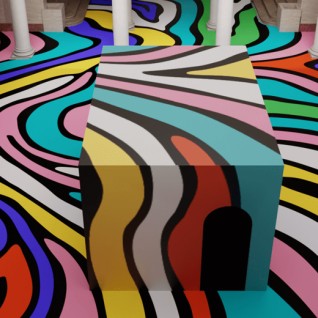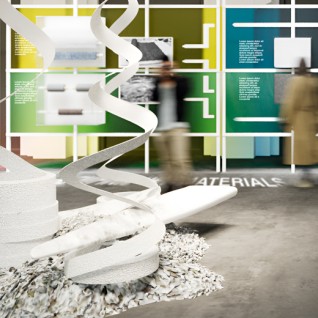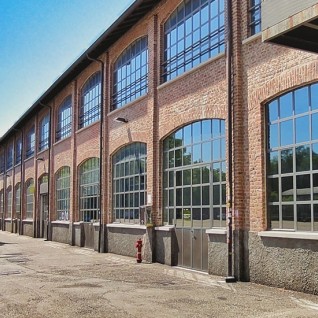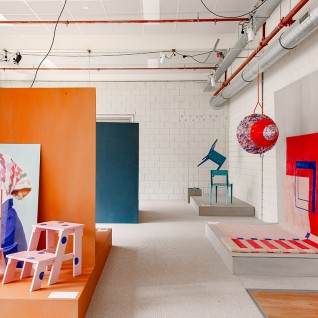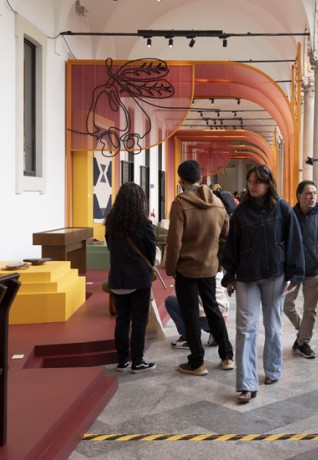The Olympic Museum helps enrich the "Milano Home Of Design" campaign
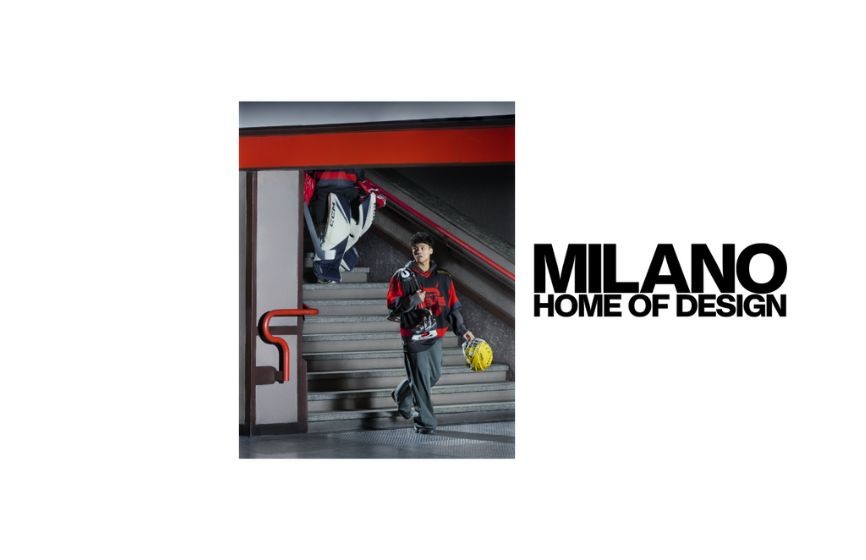
"Milano Home of Design" takes inspiration from the concept of movement: movement in a physical sense, linked to sport, but also the more symbolic movement of a constantly evolving city. Athletes from the Milanese teams are the faces of this Milano Design Week, depicted among iconic backdrops of urban design - from the majesty of the Milano Centrale station to the futuristic features of canopies designed by Norman Foster, to the timeless elegance of the M1 line in San Babila, designed by Albini and Helg, which embody the perfect melding of form and function, aesthetics and performance.
Historical sporting objects from the Olympic Museum's collection located in the Swiss city of Lausanne, don't just accompany the images, they're an integral part of them: skates, helmets, hockey sticks and curling stones become storytelling elements that link the Olympic spirit with the aesthetics of everyday life, telling the story of how sport has evolved, through materials, technique and design.
These objects - key features of the promotional campaign - are on display at the Salone del Mobile, in OnLocation's hospitality area dedicated to Milano Cortina 2026.
Among the objects selected from the Olympic Museum's collections there is the Cooper ice hockey goalie stick because it tells the story of how a sport has evolved, with movement playing a starring role since its earliest days.
Ice hockey started in Canada in the early 19th century and only came to Europe 100 years later, making its debut at the Antwerp Olympic games in 1920. Yes, you read that correctly! At the Summer Games, even before the Olympic Winter Games were established, which would then take place four years later.
The first sticks were wooden, with right-hand paddles, and although they were heavy and difficult to handle, they allowed goalies to block and release the puck. On the other hand, those used today are designed to provide the perfect balance of lightness, strength and performance and incorporate advanced technologies to improve grip and handling.
Images from the "Milano Home of Design" campaign also include a Jofa 290/298 ice hockey goalie helmet, used almost exclusively by European, and especially Scandinavian, players in the early 1990s.
In the early days of hockey, goalies didn't wear masks and this sometimes resulted in serious injuries. In 1930, Clint Benedict (Clinton Stevenson Benedict), who played for the Montreal Maroons, fractured his nose and, six weeks later, when he returned to the ice, was the first goalie to wear a protective leather mask.
On 1 November 1959, Jacques Plantes, who played for the Montreal Canadians, suffered an injury whilst playing against the New York Rangers. At the time there were no reserve goalies on the bench and he returned to the ice to finish the game with a fibreglass mask covering his face. Over the years, the mask has evolved to provide full or semi-full face protection.
Movement relates to the graceful twirls of Graf ice skates, which tell the story of the evolution of a discipline with distant origins. As far back as the 13th century, Dutch people used canals to travel from one village to another. Skating later spread to England, where the first artificial rinks and skating clubs were created.
Two Americans were the first to perform using major developments in the history of the sport. In 1850, Edward Bushnell from Philadelphia revolutionised skating with the introduction of skates with steel blades, which allowed for more complex movements and turns. In the 1860s, Jackson Haines, a ballet teacher living in Vienna, added a touch of grace to the sport by introducing elements from dance and ballet.
Figure skating was the first sport to feature in the Winter Games, even though it was already on the calendar at the Olympic Summer Games in London in 1908 and Antwerp in 1920, before the Winter Games in Chamonix in 1924.
The objects featured in the "Milano Home of Design" campaign had to include a curling stone. Seems a bit odd? The curling stone, used in a discipline that made its Olympic debut in Chamonix in 1924, weighs between 17.24 and 19.96 kg and is made of a rare, dense granite extracted from the tiny, uninhabited Scottish island of Ailsa Craig.
This material is resistant to water and doesn't break or crack easily. Some stones can even last for decades.
"We are really proud to have provided some heirlooms from our collections to develop Design Week's promotional campaign", says Angelita Teo, Director of the Olympic Museum. "This is just the first part of a partnership with Milano&Partners that will also see us as key players during other weeks throughout the year. Collaborations like this, which enhance the Games from new perspectives, are the best way to give substance to the concept of "Sport. And More Than Sport", which represents the Olympic movement so well. The Olympics are not only made up of competitions, results and sporting feats but they're also extraordinary occasions for sharing design, fashion, music, art and culture more generally".
The collaboration between Milano&Partners and the Olympic Museum for the "Milano Home of Design" campaign is part of a wider project, which leverages the city's cultural agenda to bring the Olympic spirit to the heart of Milan. This is part of the Milano Cortina 2026 Cultural Olympiad programme, which aims to involve the cultural community in an open project that people can take part in, enhancing cultural and artistic excellence in the name of the Milano Cortina 2026 Olympic and Paralympic Games, which Italy will host from 6 to 22 February and from 6 to 15 March 2026 respectively.

 Log in
Log in


![Historic centre - Fashion district [traduzione in English] Primary tabs Historic centre - Fashion district [traduzione in English] Primary tabs](/sites/default/files/styles/card_square/public/event_top_event/copertina/6867/34777/masterky_NEW_1170x550.jpg?itok=hA4kUj-r)
